So you’re staring at a wall of sketchbooks. Some are pocket-sized like secrets; others could double as a dinner tray. Do you go small and spontaneous, or big and bold? Whether you’re starting fresh or starting again, this size guide will help you figure out what actually fits your life, your tools, and your creative rhythm. Because finding the right sketchbook isn’t just about paper—it’s about how you want to show up on the page.
Small, scrappy, and always up for adventure, pocket-sized sketchbooks are perfect for artists who want to sketch on the go. Their compact size makes them easy to stash in a jacket, bag, or glove box. Ideal for observational drawing, thumbnail sketches, and creative journaling in everyday moments.
If you’re unsure where to start, A5 sketchbooks are a safe, flexible middle ground. Big enough to stretch your ideas, but small enough to not feel precious or overwhelming. This size works well for most types of drawing, including pen, pencil, and light watercolor, making it a favorite for beginners and casual sketchers alike.
Not as common as A5 or A4, B5 sketchbooks live in the Goldilocks zone for artists who want more space but still value portability. Their slightly wider pages offer breathing room for detailed work, lettering, and mixed-media exploration. It’s a sweet spot size if you want variety without the bulk.
A4 sketchbooks are the go-to size for serious artists, students, and professionals who need more real estate for their ideas. Think: full-page sketches, layered media, or deep dives into anatomy studies. They’re less portable, but perfect for dedicated art time at a desk or studio.
Try this: Buy a 99¢ sketchbook and set a timer for 5 minutes each day. Draw literally anything—your coffee mug, a worm in a tuxedo, your left hand’s attempt at drawing your right. No rules. Just pages.
Square sketchbooks break free from traditional proportions, inviting fresh ways of thinking and framing your work. They’re great for experimenting with composition, comic panels, and social media-friendly formats. The square shape invites balance, symmetry, and out-of-the-box layouts.
When a sketchbook starts to feel more like an easel in disguise, you’ve hit the realm of the large-format sketchbook. Great for expressive linework, gestural drawing, or full-body art flailing. These big boys are often used for figure drawing or portfolio work—and they demand space and confidence.
Not an official size, but a whole vibe. A Frankenbook is anything you stitch together yourself—mixing paper types, sizes, textures, and layers to make a one-of-a-kind creative playground. Think altered books, gluebooks, and DIY sketch journals. It’s chaotic. It’s cathartic. It’s yours.
What’s the best sketchbook size for beginners?
A5 or smaller sketchbooks are great for beginners—they’re portable, less intimidating, and easy to fill.
Is A4 a good sketchbook size?
Yes! A4 gives you room to explore ideas without feeling oversized. It’s a popular choice for daily drawing.
What’s the difference between A5 and A4 sketchbooks?
A5 is half the size of A4—more compact and portable. A4 gives you more space to work with but is less travel-friendly.
What size sketchbook is best for travel?
Pocket sketchbooks or A6-A5 sizes are best for travel—easy to pack, hold, and sketch on the go.
Does sketchbook size matter?
Yes. The right size can help you draw more often. Too big and it might feel overwhelming; too small and you might feel cramped.
What size sketchbook is good for mixed media?
Larger sizes like A4 or square formats give more room for layering, blending, and experimenting with different tools.
Should I try more than one sketchbook size?
Absolutely. Each size invites different kinds of drawing—switching it up can keep things fresh and fun.
What if I don’t like my sketchbook size?
Repurpose it. Did it feel too big? Too small? Was the texture all off? Not all sketchbooks are created equally. It’s okay to jump around to different sizes, so maybe one day you will change your mind.


